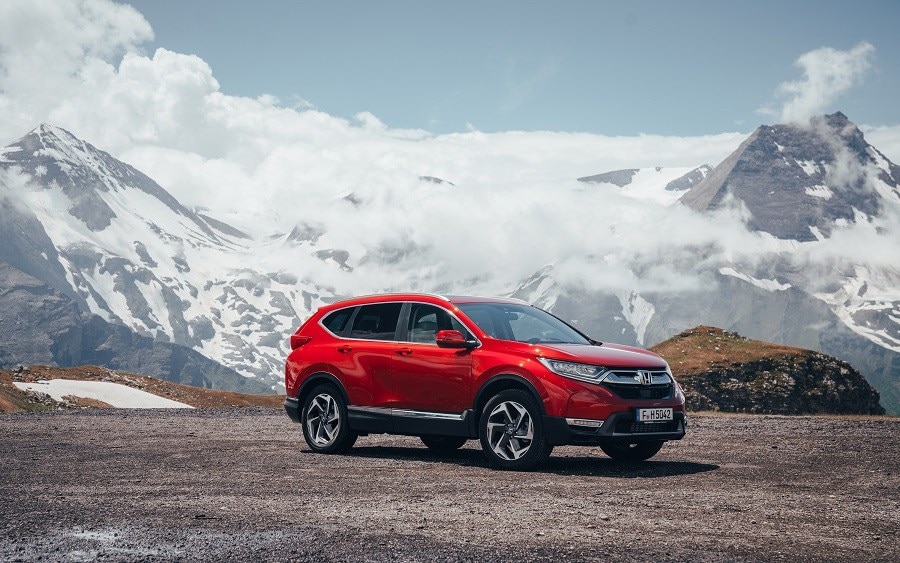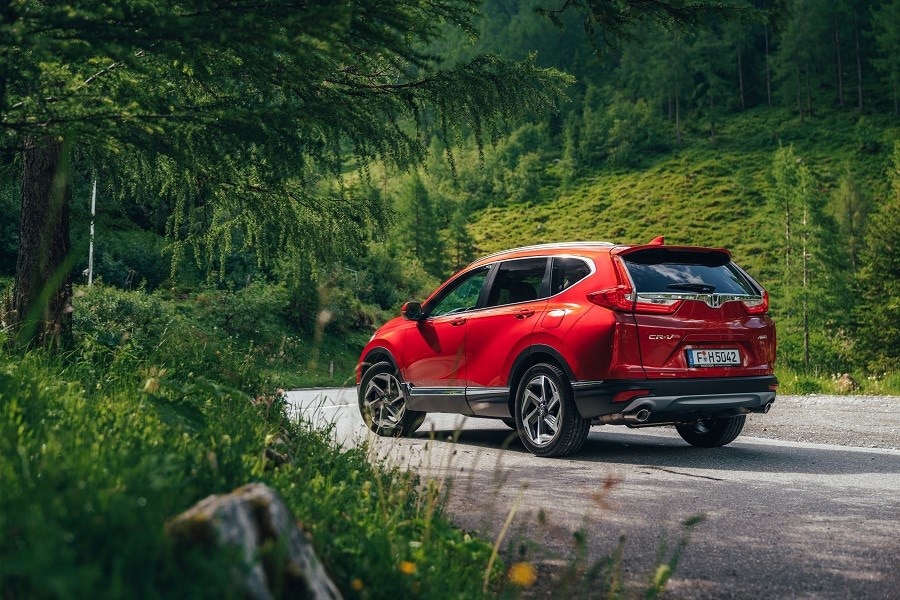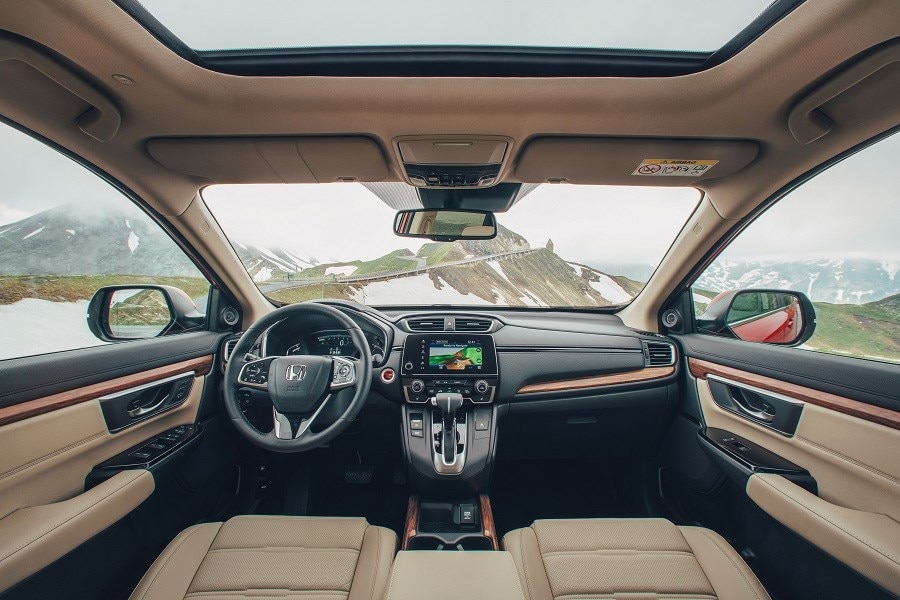Model Review
First introduced to the UK in 1997, the Honda Comfortable Runabout Vehicle, or CR-V for short, was the first true high-volume crossover and helped to set the template for all future ‘soft-roaders’ – helping lay the foundations for today’s hugely popular crossover market.
Designed to be both practical and extremely reliable, the first couple of generations suffered from having less-than-premium interiors, especially in lower specifications but with only the Toyota RAV4 as its main rival, the CR-V was proud to be popular.
By the time the fourth generation came around in 2012—after the CR-V had posted more than five million global sales through its first three iterations—the rest of the motoring industry had caught onto the crossover trend and were beginning to produce similarly sized and styled alternatives.
The fourth CR-V was introduced into a bloated SUV market, where premium and affordable brands were providing a range of crossover challengers to the CR-V. But what sets Honda apart from many of its competitors is the range’s ferocious reliability that many can’t match. With their technological innovations on top of that, the brand’s reputation helps to push many of its models to the general population, rather than to the keen motorist.
In 2015, Honda updated the fourth generation with a cosmetic facelift and a revised range of powertrains, which helped provide a more premium feel and more efficient driving through its diesel engine combinations.
But anti-diesel sentiment caused Honda to change direction in 2018, with the latest update to the CR-V featuring a petrol-only engine range to move in line with contemporary trends.
Latest model
The latest CR-V was first shown at the 2018 Geneva Motor Show and went on sale in Autumn of that year.
It features completely updated styling including Honda’s trademark ‘eyebrow’ bonnet line over the headlights and a large chrome grille, as well as LED front and rear lights.
The other significant change is to the powertrain, with Honda dropping its diesel models—traditionally the best-selling CR-V derivatives—in favour of a line-up that consists solely of petrol engines, including a hybrid version.
Otherwise, it’s a tried and tested formula with the added advantage of the CR-V being one of the few smaller sized SUVs to offer a seven-seat option.
Value for money
There are four trim levels to choose from, with the entry-level car coming in at £25,995. That’s in line with a number of smaller crossover rivals, yet it comes with a fairly comprehensive package of standard kit.
Included at that price are a touch-screen, LED headlamps, climate control and alloy wheels so it’s by no means a miserly offering.
Although while the list prices are fairly attractive, the CR-V isn’t as economical as some of its rivals and you’ll be lucky to see 40mpg with a manual gearbox, while low 30s is a more realistic proposition if you opt for the CVT auto. Emissions are higher than average too, which has tax implications.
Looks and image
The previous CR-V came into criticism for its rather dowdy looks, but the new model looks altogether more modern, thanks to a bold chrome grille and a distinctive front end that echoes the family look pioneered by the smaller Civic.
The rear is neat, too, with a chrome central bar that extends over the LED taillights to give the back-end a smart and upmarket appearance. It’s a far more youthful-looking car than the CR-V before it, making it an attractive proposition for younger families. Chunky side, front and underbody protection also gives it a purposeful stance.
Space and practicality
The latest CR-V builds on the excellent reputation that its predecessor had for passenger comfort. That means you get a flat floor throughout, and decent legroom in the first two rows of seats.
Opt for the seven-seater, which has two pop-up chairs in the load bay, and the rearmost occupants will face a bit of a squeeze but the seats are perfectly adequate for young children, making the Honda a good option for larger families or for people whose children enjoy taking their friends with them for days out.
The previous model had an exceptional reputation for safety, achieving a five-star at Euro NCAP. With the current model having a very similar structure, it should fare equally as well.
Loading is straightforward thanks to a deep tailgate and a flat load floor, though shorter drivers may struggle to reach the tailgate to pull it closed as it opens quite wide.
Engines
Honda completely ditched its old engine range for the new CR-V, which initially comes with just one engine: a 1.5-litre turbocharged petrol unit coupled to either a six-speed manual or a seven-speed CVT transmission.
The CVT also gets a power boost of up to 190bhp as opposed to the manual’s 175bhp, so that the power-sapping nature of the transmission doesn’t have an impact on performance.
Both units are quite peppy, with sub-10 second 0-60mph times.
Later on, Honda intends to launch a hybrid version of the CR-V, which will use the same base engine, but with a hybrid electric powertrain alongside it, which should bring emissions down and fuel economy up.
At present, the company has no plans to introduce a diesel version of the CR-V.
Things to look for
Like most Hondas before it, the CR-V is expected to have a strong reliability record, while the manufacturer backs it up with a three-year, 90,000-mile warranty.
If you do buy one make sure you keep it clean and in good order as previous Honda models haven’t been the best on the market for corrosion protection, and Honda only offers a three-year guarantee against surface corrosion, though the guarantee for rust coming through from behind the paintwork is a more respectable 12 years.
Rivals
The small SUV and large crossover markets are converging ever closer, with the CR-V facing competition from the likes of its old nemesis, the Toyota RAV4, as well as other models such as the Kia Sportage, Hyundai Tucson, and Ford Kuga. There’s an overlap in price terms with some larger crossovers, too, such as the Nissan Qashqai and Vauxhall Grandland X.
Depreciation
Thanks to Honda’s excellent reputation of reliability and build quality, the resale value of the CR-V holds up very well— it’s certainly a more desirable option on the used market than most European models thanks to the perceived quality of Japanese SUVs.
You should get a return of around 50 per cent of its list price after three years, depending on the model.





